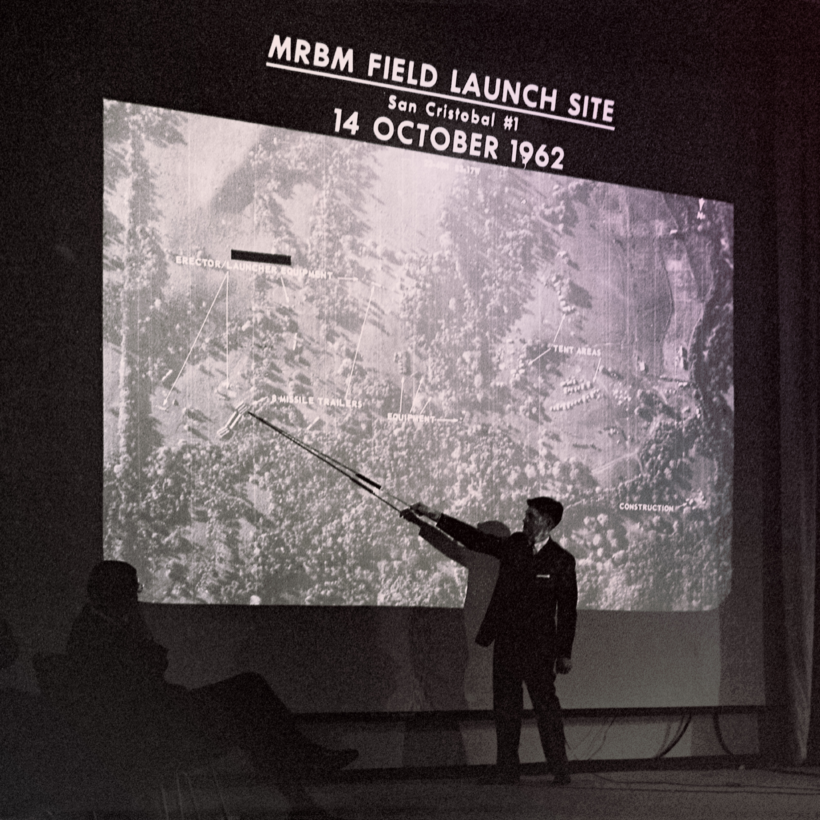After the Cold War ended — or Cold War One, as perhaps we should call it — many hawkish historians argued that at no point in the conflict was there ever a real danger of a nuclear war and all the fears of Armageddon were overhyped. The leaders of neither side wanted a hot war and the MAD (Mutually Assured Destruction) theory had been proved right all along; humanity was rational.
Not quite. Max Hastings’s brilliantly told account of the Cuban missile crisis shows how the word “abyss” is no exaggeration for the drama that unfolded 60 years ago. He concludes his compelling narrative by simply saying: “The world got lucky.”
Reading the book over the past couple of weeks while following daily dispatches from Ukraine gave it a disturbing topicality — and fed a gnawing fear that the world leaders of today might be unable to avoid stumbling into a catastrophe more like 1914 than 1962.
The Cuban crisis is hardly new territory. There have over the decades been scores of books and films on the subject, some of them very good, and a few more this anniversary year. Hastings has cleverly woven the story together from all sides, most interestingly from little-known Cuban sources previously unused in American, Russian or European accounts. This story of a war that never happened is every bit as stirring as his books about battles that did.
“The world got lucky.”
When on October 16, 1962, the CIA told President Kennedy that it had incontrovertible photographic evidence that the Soviet Union had installed (so far unarmed) nuclear missiles in Cuba, he knew that his presidency would be finished if he could not quickly find a way of removing an atomic threat 90 miles from mainland USA.
During the previous three weeks there had been rumors in the American press about Russian military deployments in the Caribbean. Nikita Khrushchev, the Soviet Communist Party boss, had assured Kennedy there were only defensive conventional weapons in Cuba and just 10,000 Russian soldiers. That is what the president believed and told the American people in repeated public statements.
Six days later Kennedy was forced to go on television and tell the world something close to the truth. The two weeks of “eyeball to eyeball” confrontation between Washington and Moscow that ensued while the rest of the world looked on, powerless, became part of Cold War mythology and form the core of the book. Hastings describes them in dramatic, almost hour-by-hour detail from DC, the Kremlin and Fidel Castro’s Havana headquarters.
Max Hastings has cleverly woven the story together from all sides, most interestingly from little-known Cuban sources previously unused in American, Russian or European accounts.
In Washington there were agonized debates about how to react, which have long been available verbatim. Kennedy bugged the White House (although the presence in the West Wing for a night of one of his many young mistresses was unrecorded).
He said later that “you will never know the amount of really bad advice I received” about Cuba. Most of it came from his generals. True to stereotype, they wanted to bomb the hell out of the island, then invade to enforce regime change to depose Castro. Much of Hastings’s vitriol is reserved for the US military top brass. From the account here the fictional characters in Dr Strangelove understated the reality. As Hastings laconically observes, if the president had followed army advice, “none of us would be here to tell them how wrong they were”.
Kennedy instead wisely heeded his defense secretary Robert McNamara’s idea of a naval blockade. What the Americans did not know was that in fact there were more than 40,000 well-trained Russian soldiers in Cuba, plus nine armed nuclear bombs on aircraft and orders to use them if the US invaded. The abyss was genuinely close before the two sides drew back from the brink and struck a top-secret deal that exchanged the Cuban missiles for America’s removal of its nuclear weapons from Turkey.
John F. Kennedy said later that “you will never know the amount of really bad advice I received” about Cuba.
Hastings admires Kennedy’s intelligence, calmness and common sense, although in general he is skeptical about the president’s political gifts. Cuba 1962 was his finest hour. He managed the crisis brilliantly, but it did not hide his many faults and failures — for example the Bay of Pigs fiasco in 1961, when a CIA operation to bring down Castro’s regime went awry and led directly to the missiles crisis a year later. Kennedy, as he emerges here, was not the tragic hero history has since made him.
By contrast with Kennedy’s sophistication, Khrushchev was a blundering vulgarian. How in the atomic age could he have imagined he could send scores of ships carrying dozens of missiles and nuclear warheads thousands of miles, and place them on an island right next to the US without anyone noticing? Or that the Americans would do nothing about the nukes once they were discovered?
They were reckless gambles based on little understanding of his opponent and truly lousy intelligence gathering. Six decades ago the cost was principally to Russian pride and Khrushchev’s job — he was later removed from power in a Kremlin coup.
This is a scary book. Hastings sees little evidence that today’s leaders understand each other any better than they did in 1962, or are less inclined to gamble and bluster with nuclear rhetoric. The Soviet Union has been replaced by an equally brutal Russia and, more dangerously in a new era of global unfreedom, by other autocratic states armed with weapons of mass destruction. The risks, Hastings says, have multiplied since 1962, not only because of Vladimir Putin and the like, but thanks to errors by local commanders. The world might not be so lucky again.

Victor Sebestyen is a historian and the author of several books, including Budapest and Lenin

